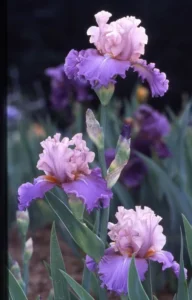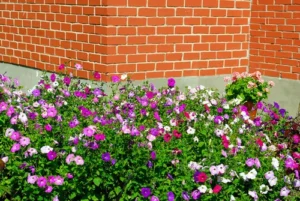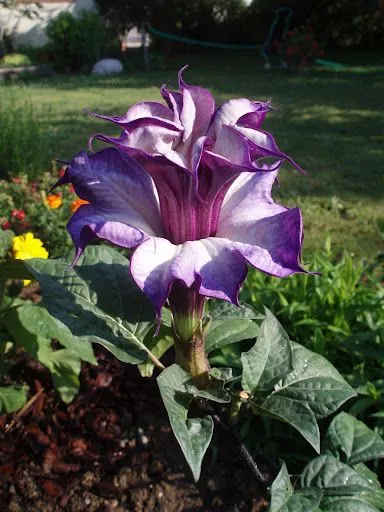Mastering the Art of Flower Arranging Techniques, Styles, and Practical Tips for Creating Stunning Floral Compositions
1. Principles of Flower Arranging
Flower arranging principles are foundational to creating harmonious and visually appealing compositions:
- Balance: Achieving balance in floral arrangements is essential to creating a pleasing aesthetic. Formal balance involves symmetrical arrangements where the visual weight is evenly distributed on either side of a central axis. Asymmetrical balance, on the other hand, creates interest by placing different elements of varying visual weight in a way that feels balanced yet dynamic.
- Proportion: Proportion refers to the relationship between the size of the flowers, foliage, and the container or space they occupy. It’s important to consider the overall size of the arrangement in relation to its surroundings, ensuring that the proportions are visually pleasing and appropriate for the setting.
- Contrast: Contrast adds visual interest and depth to floral arrangements. It can be achieved through differences in color, texture, shape, and size of flowers and foliage. For example, pairing delicate, airy flowers with bold, textured foliage creates a striking contrast that draws attention to the arrangement.
- Harmony: Harmony ensures that all elements in the arrangement work together cohesively. This can be achieved by selecting flowers and foliage that complement each other in terms of color palette, texture, and overall style. Harmonious arrangements create a unified look that is pleasing to the eye.
- Rhythm: Rhythm in flower arranging refers to the movement and flow within the composition. It guides the viewer’s eye through the arrangement, creating a sense of continuity and visual interest. Rhythm can be achieved by varying the heights, directions, and placement of flowers and foliage to create a natural and dynamic flow.
- Unity: Unity ties together all elements of the arrangement into a cohesive whole. It ensures that every flower, foliage, and accessory contributes to the overall theme or message of the arrangement. A unified arrangement feels harmonious and purposeful, reflecting the intent behind the design.

2. Techniques for Flower Arranging
Mastering flower arranging techniques requires practice and skill to manipulate flowers and foliage effectively:
- Cutting and Conditioning: Properly cutting flower stems at an angle with sharp, clean scissors or floral shears helps facilitate water absorption. Conditioning involves removing any foliage that would be submerged in water and placing the stems in a bucket of water with floral preservatives to hydrate and nourish the flowers before arranging them.
- Wiring and Taping: Wiring flowers and foliage is a technique used to create sturdy stems for insertion into arrangements. Floral wire is wrapped around the stem and secured with floral tape to provide support and flexibility. This technique is especially useful for delicate flowers and for creating intricate designs such as corsages and boutonnieres.
- Clustering and Grouping: Clustering flowers and foliage together creates focal points within the arrangement and emphasizes certain colors or textures. Grouping flowers of the same variety or color can create impact and visual intensity, while mixing different textures and shapes adds complexity and interest.
- Layering and Fanning: Layering flowers and foliage helps create depth and dimension within the arrangement. Flowers with larger blooms or taller stems are placed towards the back or center of the arrangement, while smaller flowers or foliage are layered in front to create a natural, layered effect. Fanning out blooms or foliage creates a balanced and organic shape that enhances the overall composition.
- Armature Construction: Building an armature or framework using natural materials (such as branches, vines, or floral foam) or artificial structures (such as wire frames or grids) provides support and structure for the arrangement. Armatures help maintain the shape of the arrangement and guide the placement of flowers and foliage, allowing for more creative and elaborate designs.
3. Styles of Flower Arranging
Floral design encompasses a wide range of styles, each with its own characteristics and aesthetic influences:
- Traditional or Formal: Traditional floral arrangements are characterized by their symmetrical designs, classic flower choices (such as roses, lilies, and carnations), and structured compositions. These arrangements are often used for formal occasions such as weddings, receptions, and corporate events, where a sense of elegance and sophistication is desired.
- Modern or Contemporary: Modern floral arrangements focus on minimalism, asymmetry, and unconventional elements. They often feature unusual flower choices, artistic design principles, and negative space as an essential element of the composition. Modern arrangements are favored for their artistic expression and ability to evoke emotion and intrigue.
- Natural or Garden Style: Natural floral arrangements mimic the appearance of flowers growing organically in a garden or natural setting. They are characterized by their loose, flowing designs, varied textures, and abundance of seasonal blooms and foliage. Garden-style arrangements emphasize the beauty of natural materials and are popular for their romantic and whimsical appeal.
- European or Ikebana: European floral design emphasizes elegance, balance, and simplicity. It often incorporates traditional floral arranging techniques with a focus on refined aesthetics and timeless beauty. Ikebana, or Japanese floral art, is characterized by its minimalist approach, asymmetrical compositions, and emphasis on space and form. Ikebana arrangements are deeply rooted in Japanese culture and aesthetics, reflecting principles of simplicity, harmony, and balance.

4. Practical Tips for Flower Arranging
Achieving successful flower arrangements involves attention to detail and careful consideration of various factors:
- Choosing Flowers: Select flowers based on their color, shape, size, texture, and fragrance. Consider the occasion, seasonality, and symbolism of flowers when choosing the right blooms for your arrangement. Mixing focal flowers (large, dominant blooms), filler flowers (smaller, complementary blooms), and foliage (greenery or branches) creates depth and interest.
- Preparation: Properly preparing flowers ensures their longevity and freshness. Remove any foliage that will be submerged in water to prevent bacterial growth. Cut stems at a 45-degree angle under running water to facilitate water uptake. Place flowers in a clean vase filled with fresh water and floral preservatives to nourish and hydrate them.
- Container Selection: Choose containers that complement the style and size of the arrangement. Consider the material (glass, ceramic, metal), shape (round, square, oval), and color of the container to enhance the overall aesthetic of the arrangement. Containers with narrow openings provide support for tall stems, while shallow containers are ideal for low-profile arrangements.
- Placement and Environment: Place arrangements in a suitable environment away from direct sunlight, drafts, and heat sources to prolong their freshness. Change the water every few days and trim stems at an angle to maintain optimal hydration and prolong the life of the flowers. Display arrangements in locations where they can be appreciated and enjoyed, such as dining tables, mantels, or reception areas.
- Personalization: Add personal touches to your arrangements to make them unique and meaningful. Incorporate ribbons, decorative accents, or sentimental items (such as heirloom vessels or keepsakes) that reflect the occasion or recipient’s preferences. Personalizing arrangements adds a thoughtful and heartfelt touch that enhances their beauty and significance.
- Flower arranging allows individuals to express their creativity and artistic sensibilities through color combinations, texture contrasts, and unique designs. It encourages experimentation and innovation, fostering a sense of accomplishment and satisfaction.
5. Benefits of Flower Arranging
Engaging in flower arranging offers numerous benefits beyond creating beautiful floral compositions:
- Therapeutic Benefits: Flower arranging has been shown to reduce stress, anxiety, and depression by promoting relaxation and mindfulness. It provides a creative outlet for self-expression and allows individuals to connect with nature in a meaningful way.
- Artistic Expression: Flower arranging allows individuals to express their creativity and artistic sensibilities through color combinations, texture contrasts, and unique designs. It encourages experimentation and innovation, fostering a sense of accomplishment and satisfaction.
- Social and Cultural Significance: Flowers hold cultural significance and are often used to celebrate milestones, express condolences, or convey emotions. Flower arranging allows individuals to participate in cultural traditions and rituals, fostering social connections and meaningful interactions within communities.
- Enhancing Spaces: Well-designed floral arrangements enhance the aesthetic appeal of homes, offices, events, and celebrations. They create inviting and memorable environments that uplift mood, inspire creativity, and evoke positive emotions.
6. Conclusion
Flower arranging is a timeless art form that combines creativity, technical skill, and an understanding of aesthetic principles to create stunning floral compositions. Whether for personal enjoyment, professional floristry, or special occasions, mastering the principles, techniques, and styles of flower arranging allows individuals to create arrangements that inspire, delight, and commemorate life’s moments. Embrace the art of flower arranging and discover the joy of creating beauty with nature’s most exquisite blooms.



